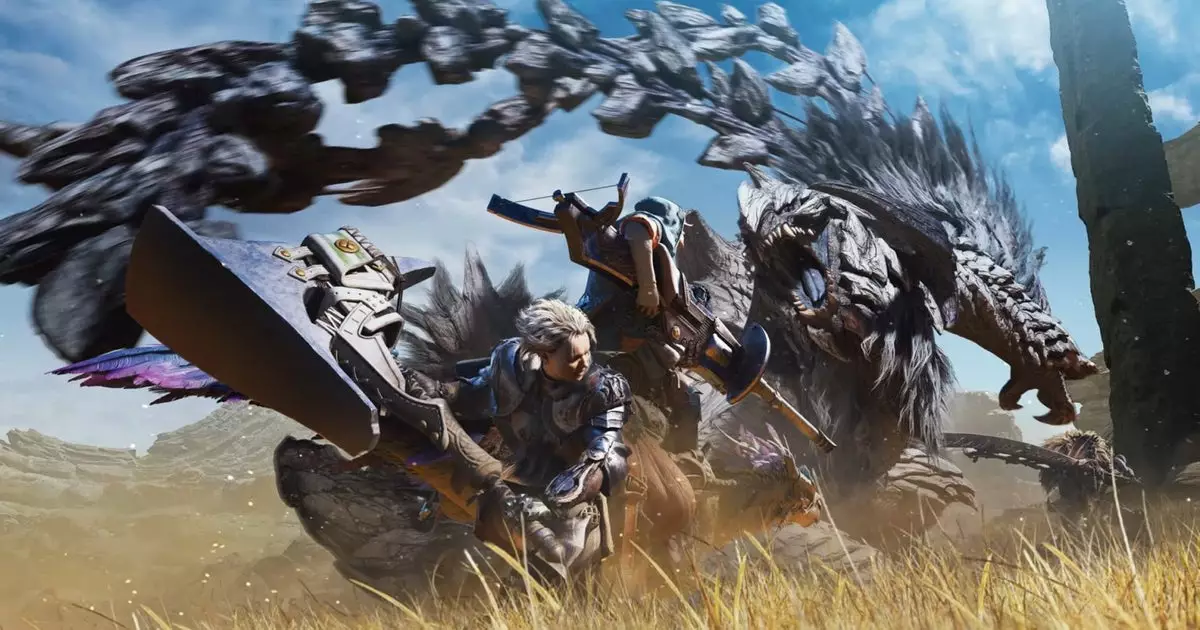Monster Hunter: Wilds introduces an assortment of new elements to the well-loved franchise, specifically in the form of tinctures associated with wyverns, toads, and arachnids. While the anticipation surrounding such additions is high, the actual changes to weapon types may not be as revolutionary as fans hope. Although the game’s weapons may appear enhanced with more intricate designs and modified movesets, players might find themselves confronting a somewhat familiar arsenal, reminiscent of earlier entries in the series.
From the get-go, it is apparent that while Capcom intended to expand on the existing weapons, the core tenets remain unchanged. The foundation of the game consists of various weapon types, some dating back to the first iterations of Monster Hunter, such as in Monster Hunter Freedom 2 from 2007. The introduction of weapons from Monster Hunter 4, like the Insect Glaive, hinted at innovation. However, Yuya Tokuda, the director of Wilds, indicates a shift in focus. Rather than introducing a plethora of new weapon types, the development team’s priority has been to enhance and rebalance existing ones. This decision suggests a philosophy rooted in refinement rather than raw innovation.
The Challenge of Adding New Weapon Types
The complexity of introducing a 15th weapon type into the already diverse lineup is a significant barrier. Tokuda articulates the challenge of ensuring that any new weapon feels justifiable alongside established ones, while avoiding overlaps in function and role. The existing 14 categories, ranging from the user-friendly Greatsword to the more nuanced Hunting Horn, provide a balanced ecosystem of play styles. Each weapon performs a unique job within the hunt, and finding a fresh angle for a new weapon that meshes perfectly with these could prove futile.
Tokuda underscores that the effort required to harmonize all weapon types is immense. Each game iteration demands not only the introduction of new moves and capabilities but also the recalibration of existing systems. Thus, the development team’s strategy appears to rely more on deepening the gameplay experience rather than broadening it superficially. Unique combos and moves are the focus, with the intention of keeping players engaged through nuanced interactions rather than overwhelmed by choices.
Nostalgia Versus New Experiences
For many players, the nostalgia associated with past Monster Hunter games runs deep, stirring fond memories of monster battles and harrowing hunts. As the landscape of gaming evolves, the question arises: do players truly crave new weapon types, or are they more invested in the experience of depth and complexity that familiarity offers? Capcom’s approach to weapon dynamics has perplexed some but ultimately caters to long-term fans who prioritize meaningful growth over mere novelty.
Although the lack of fresh weaponry might seem disappointing at first glance, the reassurance comes from the promise of balanced gameplay. The art of hunting in Monster Hunter relies significantly on mastering one’s weapon, which takes time and dedication. An opportunity to refine existing skills while exploring the strengths of the newly adjusted arsenal could lead to a more rewarding journey for players.
The underlying beauty of the Monster Hunter series lies in its creature designs, where each weapon finds its inspiration derived intricately from the monsters themselves. The appeal of the franchise includes a sense of wonder and creativity, revealing a world where each hunt has its backstory fueled by imagination. Tokuda’s musings on monster design hint at the potential for even more eclectic designs down the line. If the development team can innovate in new ways that question weaponization – considering fantastical monster forms that challenge traditional crafting methodologies – it might yield unprecedented dynamics concerning gameplay and aesthetic.
Monster Hunter: Wilds seems to tread a cautious path by prioritizing refinement over radical shifts. Rather than introducing new waves of weapons, Capcom appears more inclined to deepen the existing structural integrity of weapon dynamics. For fans of the franchise, this presents both a challenge and an opportunity—one that encourages exploration within the known framework while lingering excitement for what could exist in future iterations.


Leave a Reply